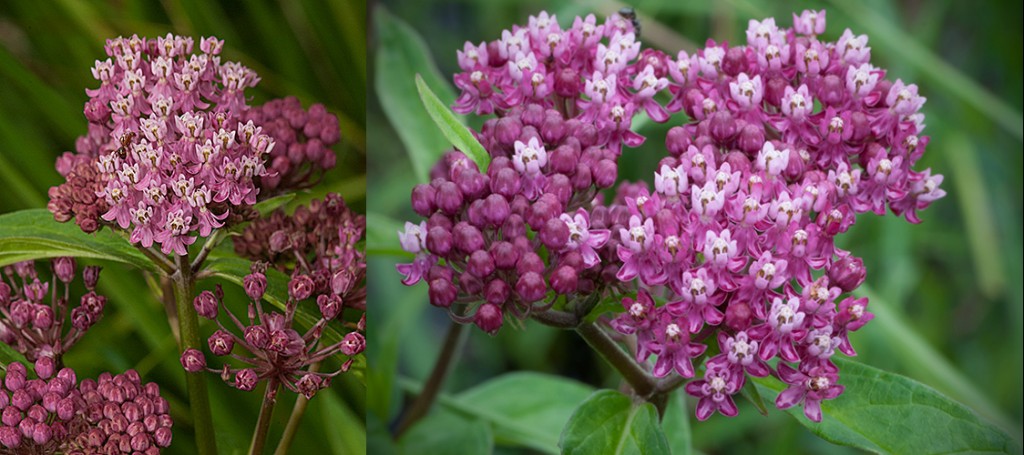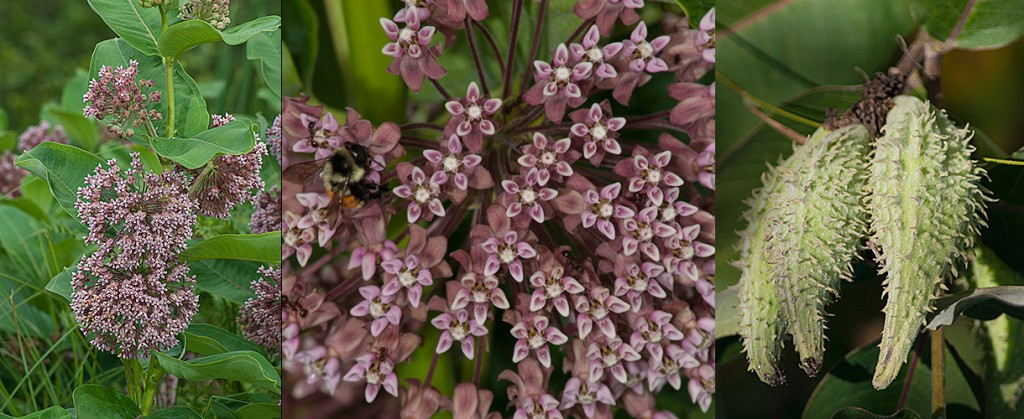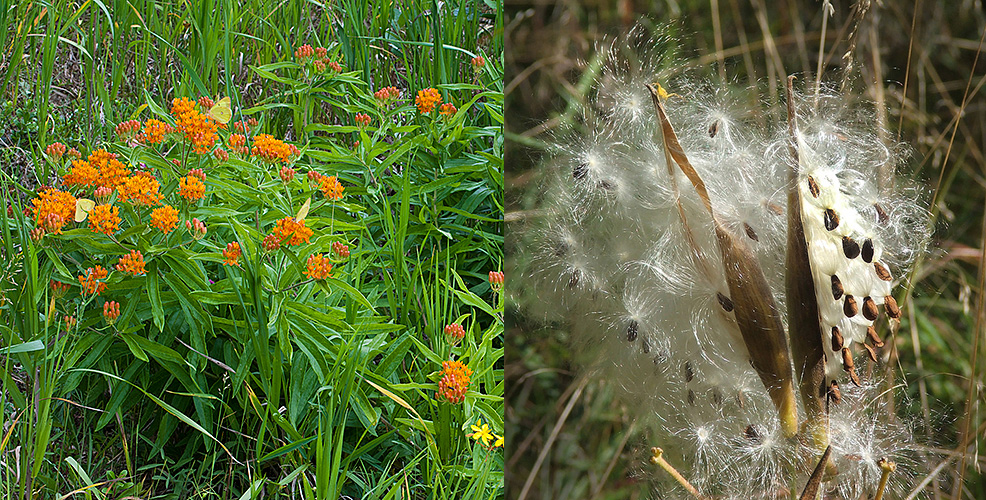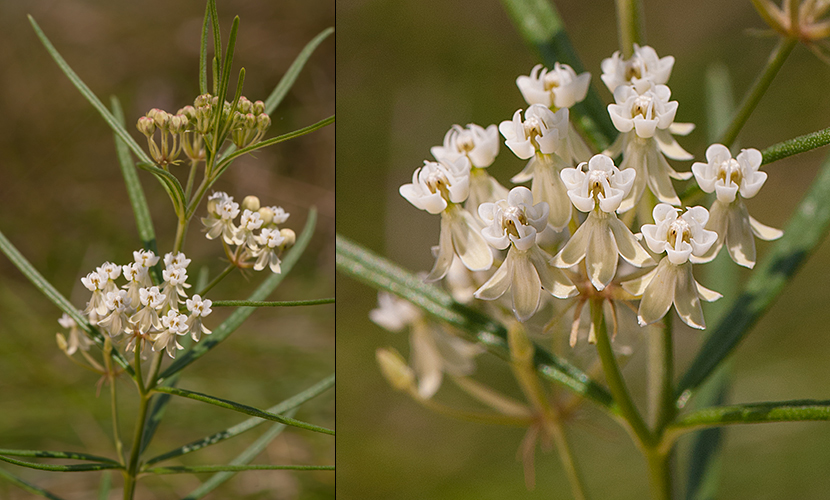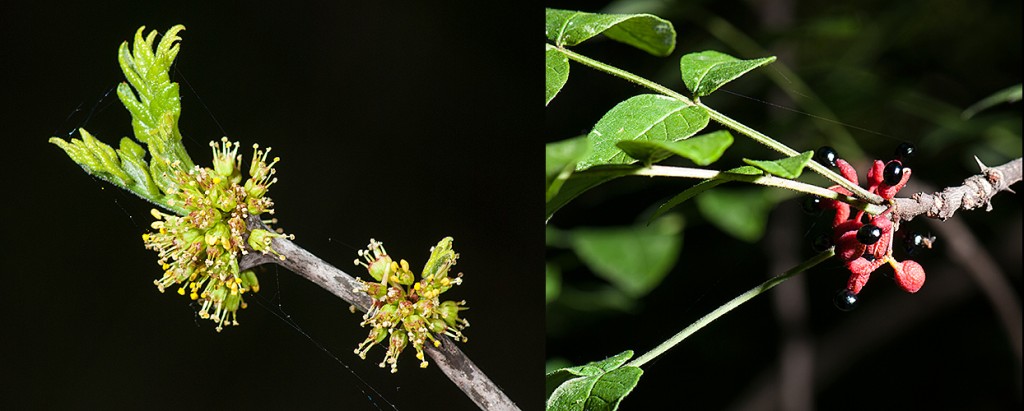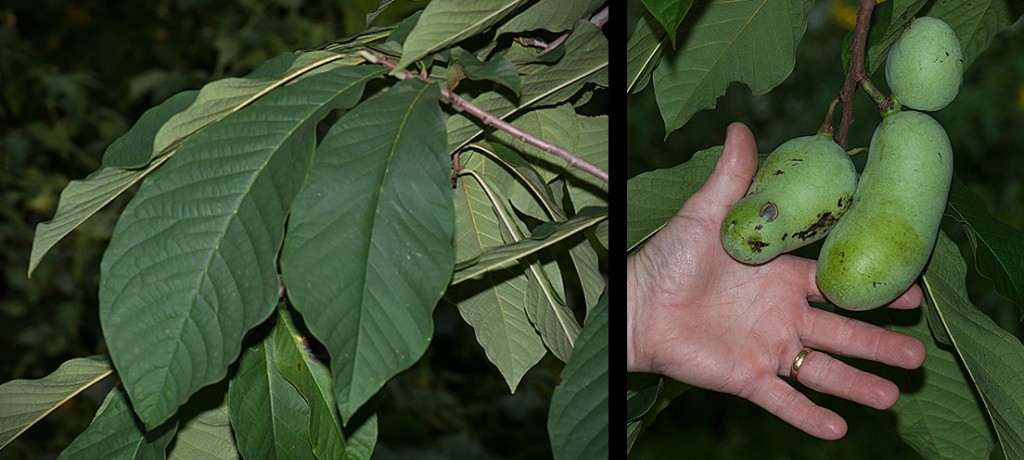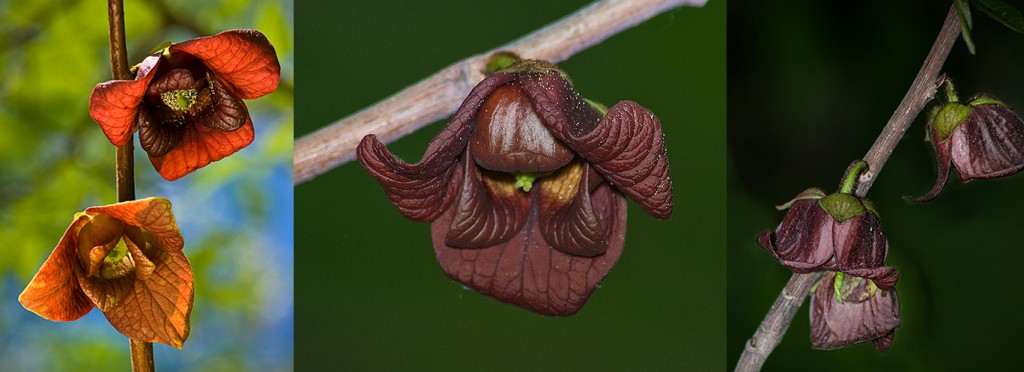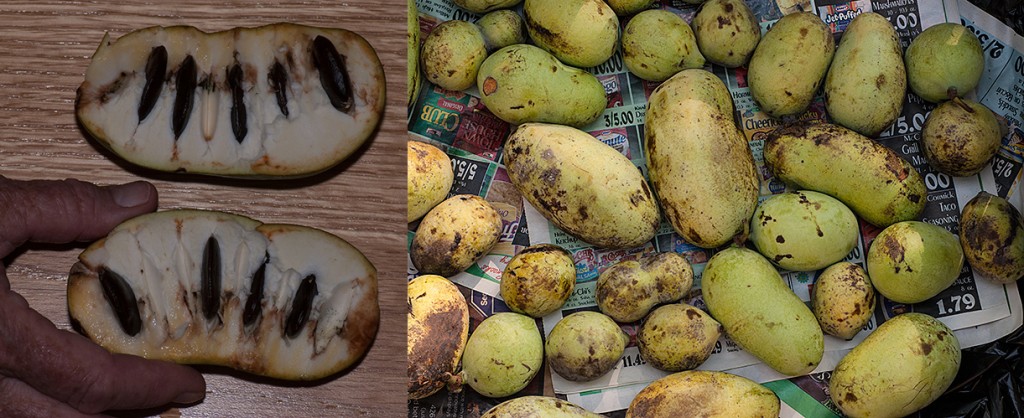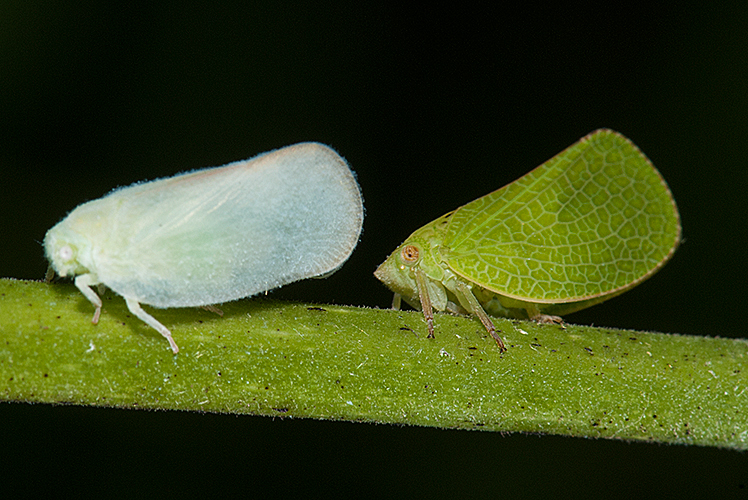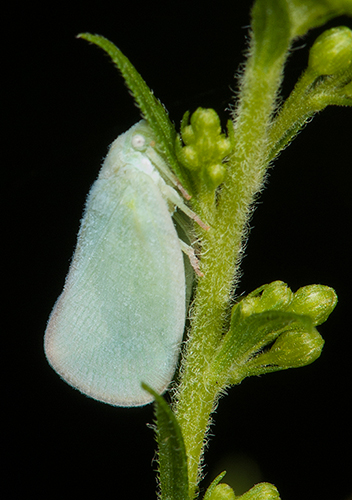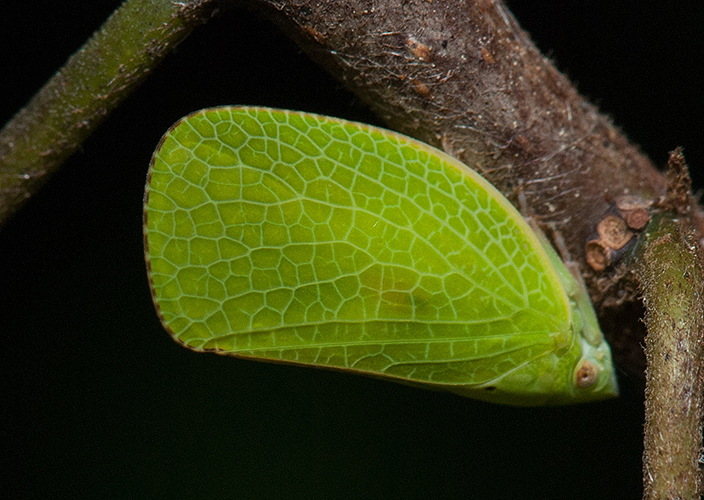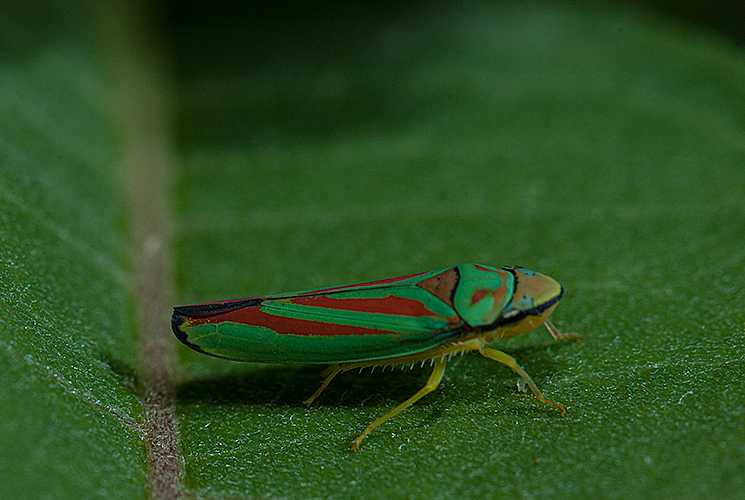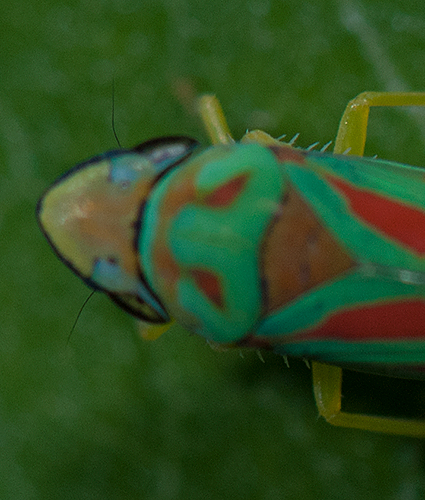Eleven species of milkweeds are native to Michigan. All species except the Butterfly-weed possess milky sap. Monarch butterfly larvae feed on the milkweeds’ foliage and the adults feed on the nectar of the flowers. The pod is correctly called a follicle that is a fruit that splits in half when it is mature along a single joint. Attached to the seed is a feather-like pappus allowing the seed to travel via the wind. Flower clusters are in umbels meaning the individual flower stems all come from the same point. Michigan’s five common species are:
Poke Milkweed (Asclepias exaltata) is a woodland species, having smooth, thin, opposite, leaves that are pointed on each end. Its white flowers, tinted with lavender or green are some of the largest of our milkweeds. Hanging in loose umbels that come from the leaf axils, they are quite distinctive.
Swamp Milkweed (Asclepias incarnata) grows where its feet can get wet. The two-toned (whitish and pink or rose) flowers, in upright clusters, bloom over a long period of time. You can often find plants with follicles that still have flower buds. Smooth, opposite, lanceolate leaves, smooth stem, and narrow upright follicles are good characters to use to recognize this species.
Common Milkweed (Asclepias syriaca) has flowers in dense spherical umbels. Their color varies from white to pink to rose to almost green. The leaves are hairy, opposite and blunt tipped. Warty, fleshy, follicles are covered with fine dense hair. This species is common in fields, woodland edges, and waste places.
Butterfly-weed (Asclepias tuberosa) has non-milky juice, alternate leaves and orange or yellow upright flower. The three photos showing the variation in flower color are all from the same stand. It grows in the Lower Peninsula and is most common in the south half.
Whorled Milkweed (Asclepias verticillata) has narrow leaves in whorls of 3 to 8 and umbels of white flowers that normally appear along the upper third of the plant. This is one of our shortest milkweeds, appearing slender in habit. It grows in dry fields, roadsides, waste places, and prairies; often in large stands, that can be spotted from a moving car. It is more common in southern Michigan but there are several records from the Upper Peninsula.
I would encourage you to plant a few milkweeds in your landscape. Plants are available from many nurseries, the flowers are unique as well as colorful, and the Monarch Butterflies could us the help.
Copyright 2013 by Donald Drife
Webpage Michigan Nature Guy
Follow MichiganNatureGuy on Facebook


